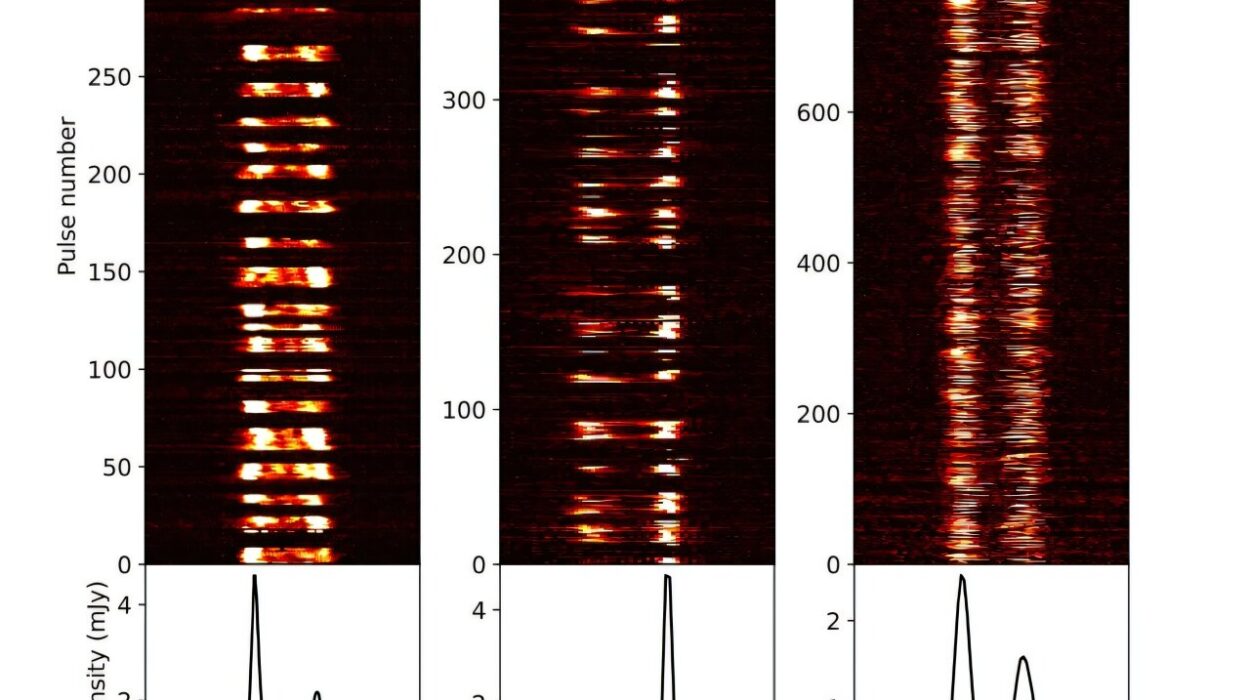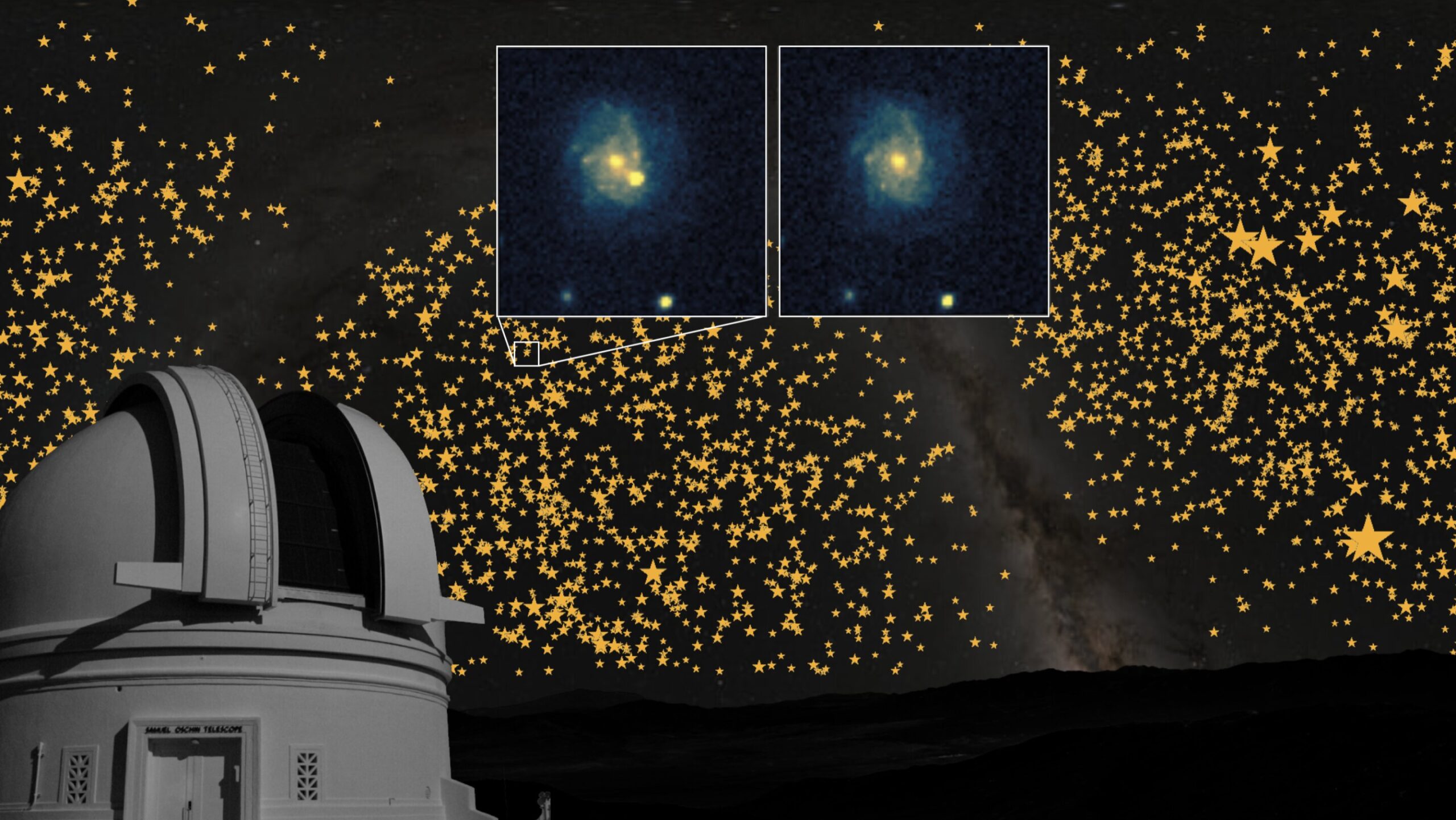Using the Five-hundred-meter Aperture Spherical Radio Telescope (FAST), astronomers have made significant advancements in understanding the emission properties of three long-period pulsars. The findings, published in a research paper on February 6, 2025, on the arXiv preprint server, offer new insights into the behavior of these fascinating celestial objects.
Pulsars are highly magnetized, rotating neutron stars that emit beams of electromagnetic radiation. Typically detected as stable radio emission bursts, some pulsars are also observable in optical, X-ray, and gamma-ray wavelengths. These emissions often exhibit intriguing variability, including phenomena such as nulls (periods of reduced or absent emission), mode changes, bright pulses, and microstructures. These behaviors have become central to our understanding of pulsar dynamics, and the FAST telescope has proven to be an invaluable tool in exploring these complex phenomena.
The study, led by Habtamu Menberu Tedila from Arba Minch University in Ethiopia, aimed to probe the emission behaviors of three long-period pulsars: PSR J1945+1211, PSR J2323+1214, and PSR J1900−0134. The research was conducted as part of the Commensal Radio Astronomy FAST Survey (CRAFTS), which is designed to provide comprehensive data on pulsar emissions using the advanced capabilities of FAST.
The astronomers focused their investigation on single-pulse observations of these pulsars, which were conducted during the pilot phase of the CRAFTS Survey. These observations utilized the 19-beam receiver on FAST, covering a frequency range from 1.05 to 1.45 GHz. The results revealed several important characteristics and behaviors unique to each pulsar.
One of the most striking findings was the detection of quasi-periodic null phenomena in all three pulsars. These nulls, which represent periods when the pulsar’s emission is significantly reduced or completely absent, were observed with durations ranging from 57 to 71.44 seconds. Specifically, the null fractions were found to be 52.46% for PSR J1945+1211, 48.48% for PSR J2323+1214, and 27.51% for PSR J1900−0134. These high null fractions suggest that the emission behavior of these pulsars is highly variable and complex.
In addition to the null phenomena, the study also uncovered interesting microstructure features in PSR J1900−0134. Microstructure pulses, which are rapid, brief fluctuations in the pulse profile, were detected down to a timescale of 2.05 milliseconds. These features are indicative of highly dynamic processes within the pulsar’s magnetosphere, providing crucial insight into the mechanisms that generate pulsar emissions.
The team also observed asymmetrical emission patterns in the other two pulsars, PSR J1945+1211 and PSR J2323+1214. These pulsars exhibited bright pulses primarily in their leading components, which is a characteristic feature of certain pulsars. This asymmetry suggests that the emission structure in these pulsars is not uniform and may be influenced by the geometry of the pulsar’s magnetic field and the orientation of its emission beam.
Another intriguing aspect of the study was the detection of quasi-periodic microstructures and varied microstructure pulses in PSR J1900−0134. This suggests that the pulsar undergoes periodic emission processes within its magnetosphere, further enhancing our understanding of the complex mechanisms at play in pulsar emission.
The study also observed variability in the intensity of the pulsar pulses. In all three pulsars, bright pulses were found to occur at different rates, with variations in the intensity of the pulse profiles. Notably, burst state profiles displayed higher peak intensities and broader widths, indicating a more intense emission during these periods.
The findings from this observational campaign offer significant new insights into the emission mechanisms of pulsars. The detection of nulls, microstructures, and other complex emission features has provided a more detailed understanding of the factors influencing pulsar emission behavior. The researchers concluded that their results demonstrate how intrinsic and extrinsic factors can interact to produce the wide variety of pulsar emission phenomena observed across different pulsars.
“This study enhances our understanding of pulsar emission mechanisms, showing that different emission phenomena may be interconnected and influenced by both intrinsic pulsar properties and external factors,” the researchers noted. These results highlight the complexity of pulsar emission processes and emphasize the importance of continuing to investigate these phenomena with advanced observational tools like FAST.
More information: H. M. Tedila et al, Unveiling the emission properties of three long-period pulsars using FAST, arXiv (2025). DOI: 10.48550/arxiv.2502.03830






